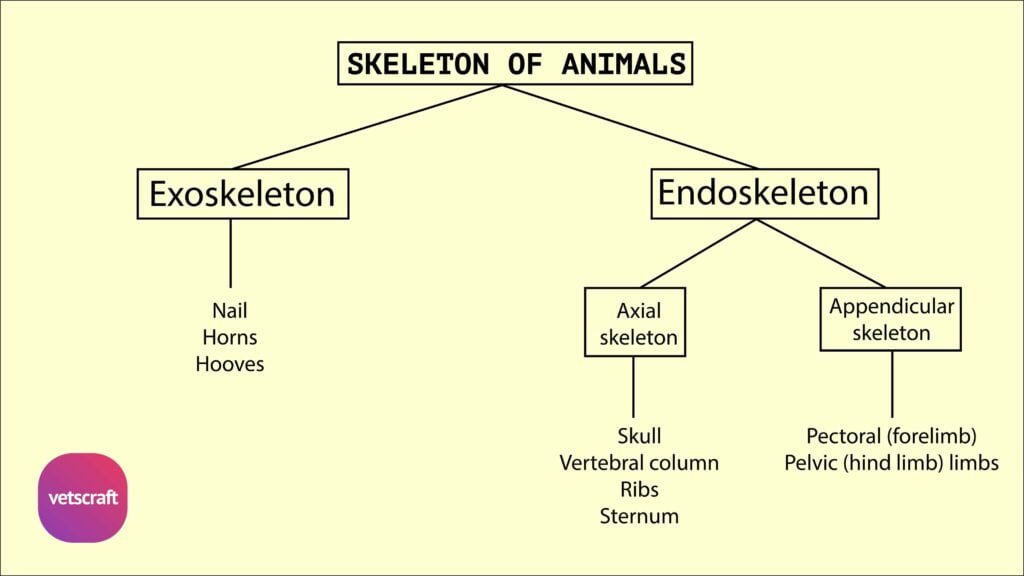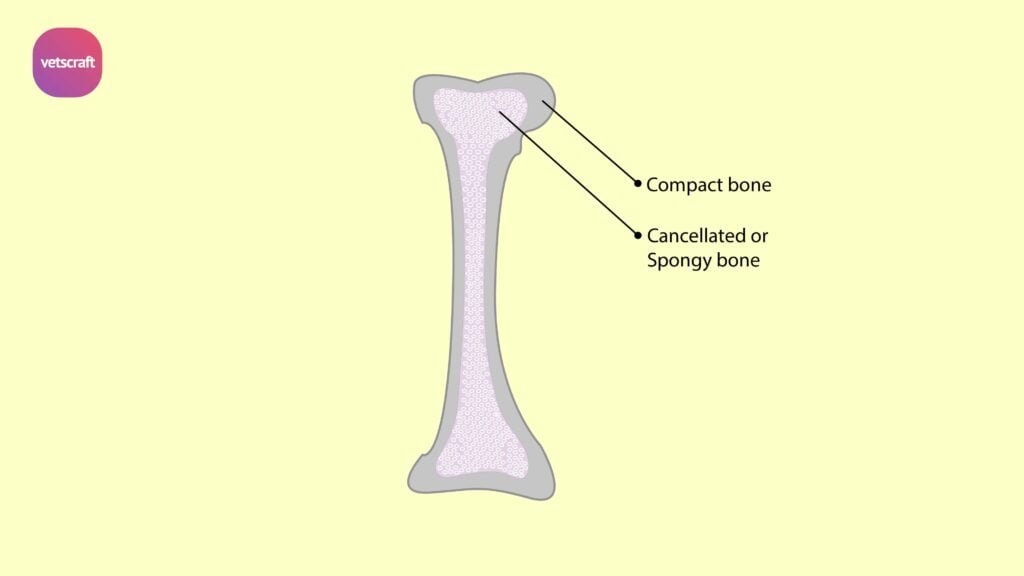The sinuses of the skull are air cavities in bones, which are lined by mucous membrane in the fresh state.
TABLE OF CONTENTS
Sinuses of the skull in ox
The sinuses of the skull are air cavities in bones, which are lined by mucous membrane in the fresh state. They communicate with the nasal cavity directly or indirectly and hence are termed diverticula of the nasal cavity. The sinuses are frontal, maxillary, palatine and sphenoid.
Frontal sinus of ox
Frontal sinus of ox is the largest of all the sinuses and is excavated in the frontal, parietal, interparietal and supraoccipital.
It extends from the posterior wall of the cranium down to the level of the anterior margins of the orbit and laterally to the frontal crests and supra-orbital process; medially it is separated from its fellow by an imperforate bony septum.
The cavity is divided into small spaces by partial septa.
This sinus communicates with the middle meatus by narrow apertures at the ethmoidal meatuses.
In the macerated skull, its communication with the cavity of the dorsal turbinate and the lacrimal part of the maxillary sinus is closed in life by the mucous membrane.
Maxillary sinus of ox
Maxillary sinus of ox is formed in the body of maxilla. It extends forward to the level of the facial tuberosity and upward to a line joining the infra-orbital foramen to the upper margin of the orbit.
It extends behind into the maxillary protuberance and the lacrimal bulla to a point nearly opposite to the bifurcating of the zygomatic process of the malar.
It also extends upward and backward through a large opening into a cavity formed by the lacrimal frontal ethmoid and the roots of the last 3 or 4 check teeth project into the sinus covered by a plate of bone.
It communicates with the palatine sinus over the infra-orbital canal. Above this it communicates with the middle nasal meatus.
Palatine sinus of ox
Palatine sinus of ox is formed in the palatine processes of maxilla, and horizontal part of palatine bones. It is separated from its fellow by a bony septum.
It extends from posterior border of the palatine to about an inch in front of the level of the first cheek tooth.
It communicates with the maxillary sinus laterally and is separated from the ventral meatus medially by mucous membrane in life.
The palatine canal passes obliquely through the posterior part of the sinus.
Sphenoidal sinus of ox
Sphenoidal sinus of ox is excavated in the body of the presphenoid and extends into the orbital wing.
It is smallest of the four sinuses and communicates with the ventral ethmoidal meatuses.
Sinuses of the skull in Horse
The Sinuses of the skull in Horse are maxillary, frontal, spheno-palatine and ethmoidal.
Maxillary sinus of horse
Maxillary sinus of horse is the largest and is formed by the maxilla, lacrimal malar, posterior turbinate and lateral masses of ethmoid.
It extends from the level of the supraorbital process behind to the level of a line joining the infraorbital foramen and the facial crest.
Its dorsal boundary is a line drawn from the infraorbital foramen backward parallel to the facial crest.
The ventral wall or floor is the alveolar part of the maxilla. It is divided into anterior and posterior part by an oblique septum directed inward, backward and upward from about two inches behind the anterior end of the facial crest.
The posterior end of the ventral turbinate forms the upper part of the septum.
The anterior compartment (inferior maxillary sinus) is partially divided by the infra-orbital canal into lateral and medial parts. The former is formed entirely in the maxillary bone and the root of the fourth cheek tooth and parts of third and fifth cheek teeth project into it, covered by a plate of bone. The medial or turbinate part communicates with the outer compartment and with the middle meatus.
The posterior compartment (superior maxillary sinus)is also divided into two parts by the infraorbital canal over which it freely communicates with spheno-palatine sinus. Dorsally it communicates with the frontal sinus through a large oval, fronto-maxillary opening. In front of this covered by a plate of bone is a narrow naso-maxillaryopening by which the sinus opens into the posterior part of the middle meatus.
Frontal or Fronto-turbinate sinus of horse
Frontal or Fronto-turbinate sinus of horse is formed in the frontal, lacrimal, ethmoid and dorsal turbinate bone. It consists offrontal and turbinate parts.
The frontal partextends forward to the anterior margins of the orbits, backwards to the temporal condyles and outwards into the roots of the supra-orbital processes.
A median septum is present as in the ox.
The turbinate part is situated in the posterior part of the dorsal turbinate bone, roofed in by the nasal and lacrimal bones.
It extends forward to a transverse plane about half way between the anterior margin of the orbit and the infra orbital foramen.
It is in free communication behind with the frontal part over the lateral mass of ethmoid.
It is separated form the nasal cavity by a thin turbinate plate.
Spheno-palatine sinus of horse
Spheno-palatine sinus of horse is formed in the body of presphenoid and vertical part of the palatine bone.
It communicates with the medial part of the posterior compartment of the maxillary sinus.
Ethmoid sinus of horse
Ethmoid sinus of horse is the largest cavity in the ethmo-turbinate. It communicates with the maxillary sinus.
Sinuses of the skull in Dog
The frontal Sinuses of the skull in Dog is confined to the frontal bone and opens into the ethmoidal meatuses.
The maxillary sinus is small and communicates with the nasal cavity, very freely. There are no sphenoidal or palatine sinuses.
Sinuses of the skull in Fowl
There are no sinuses in the skull of fowl is present.

